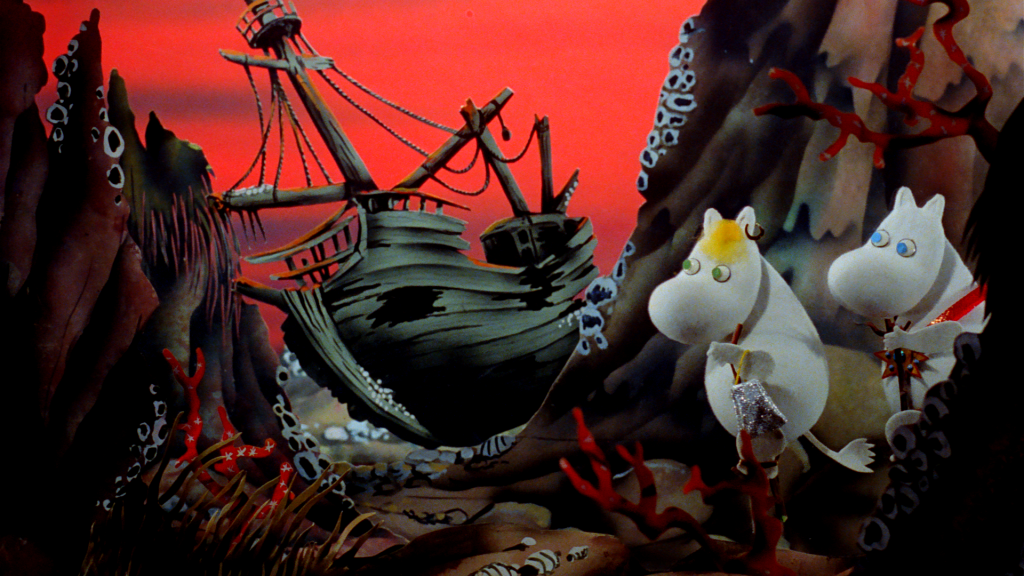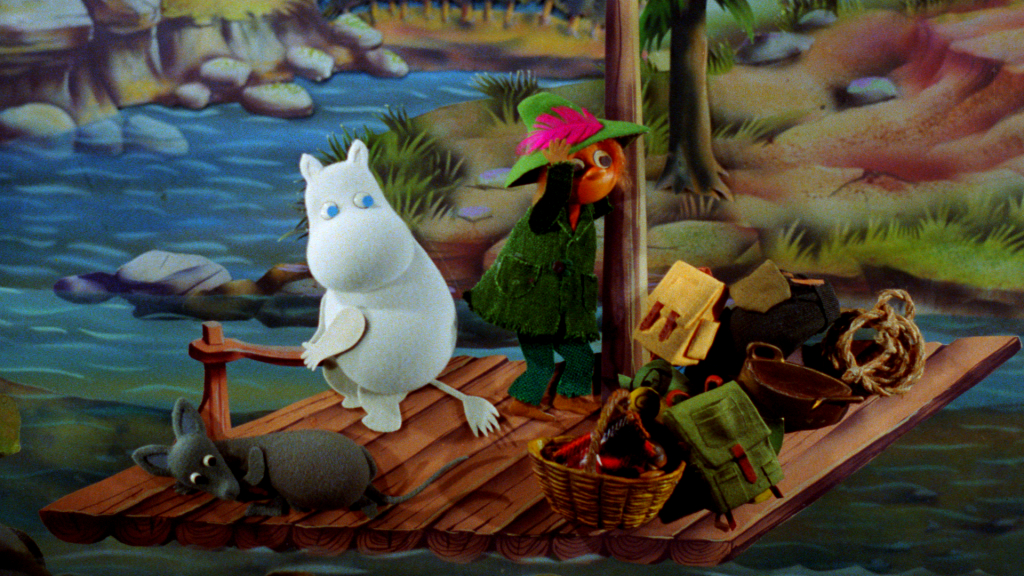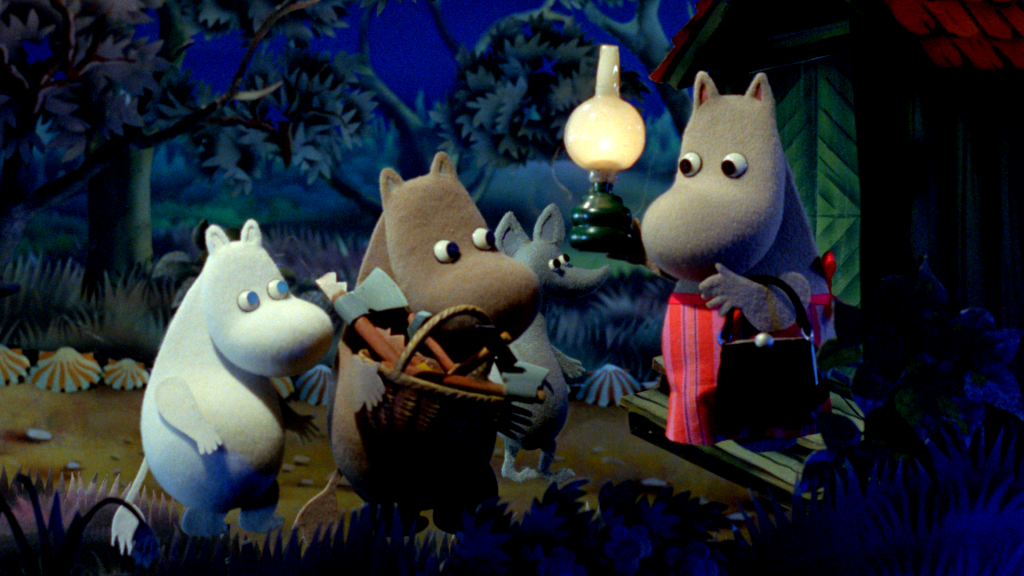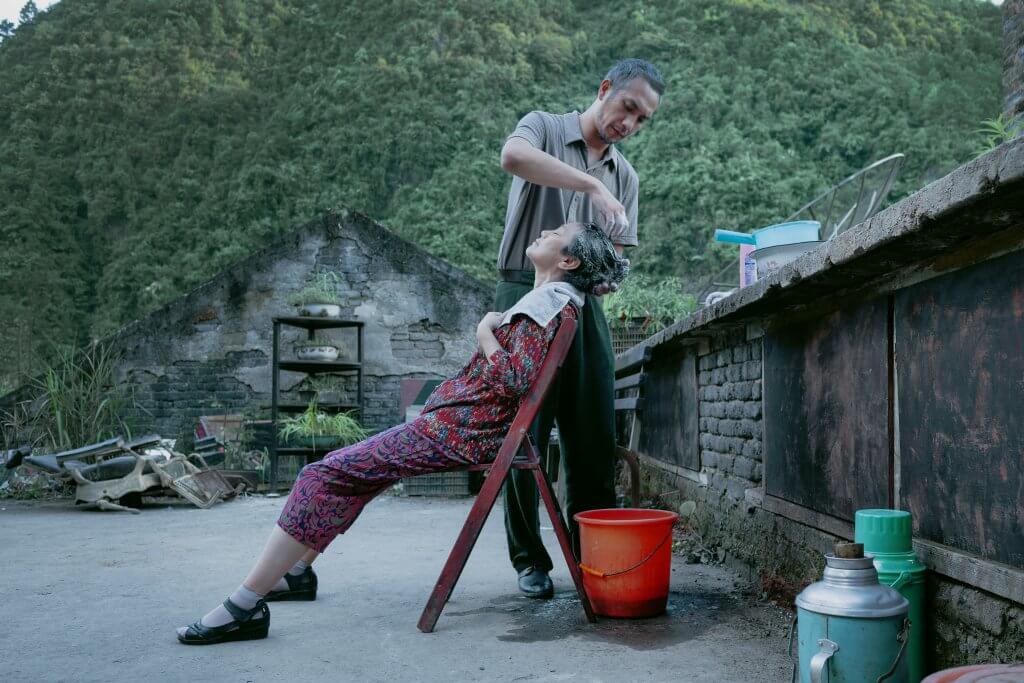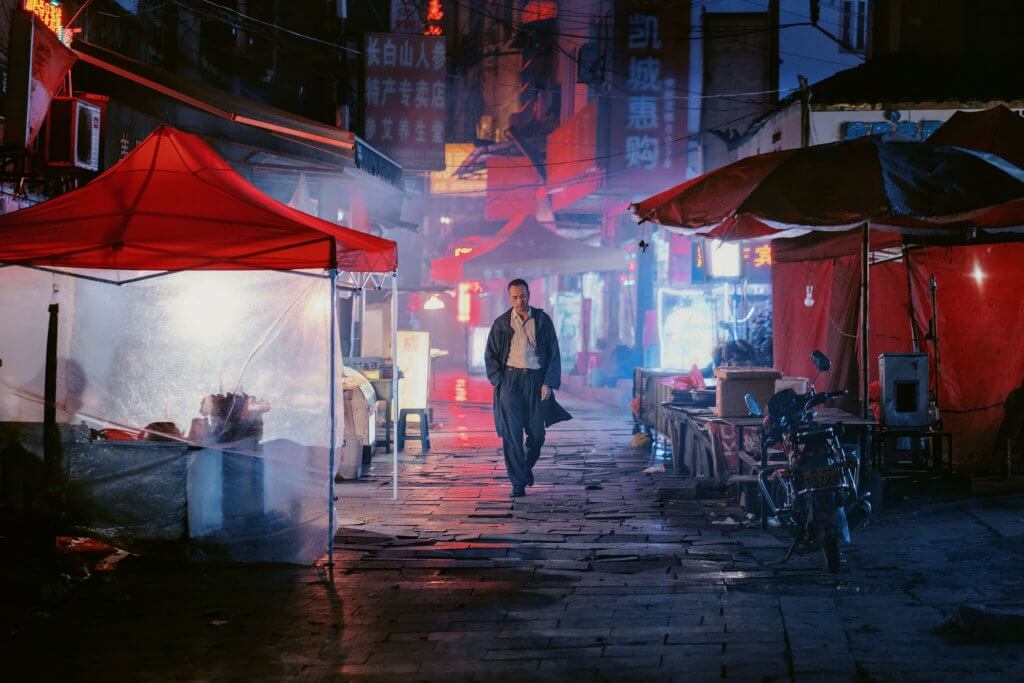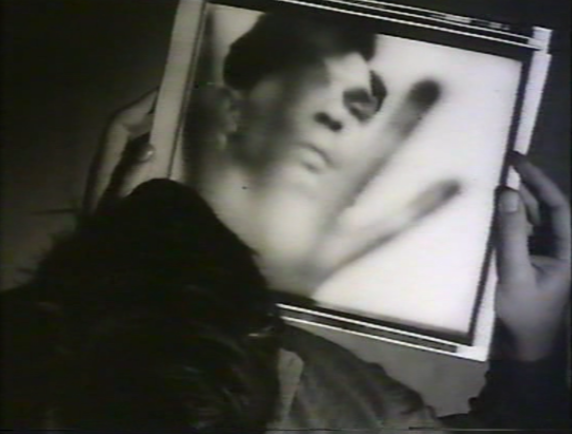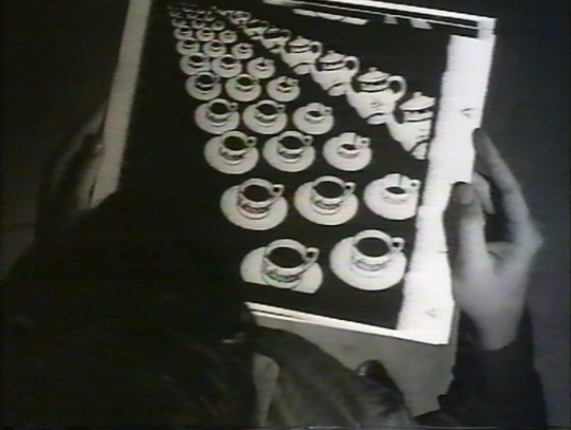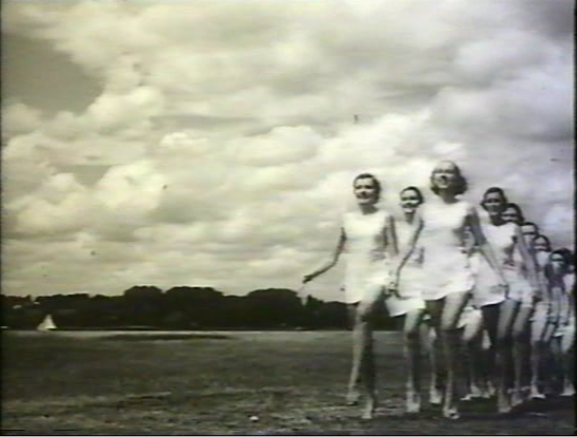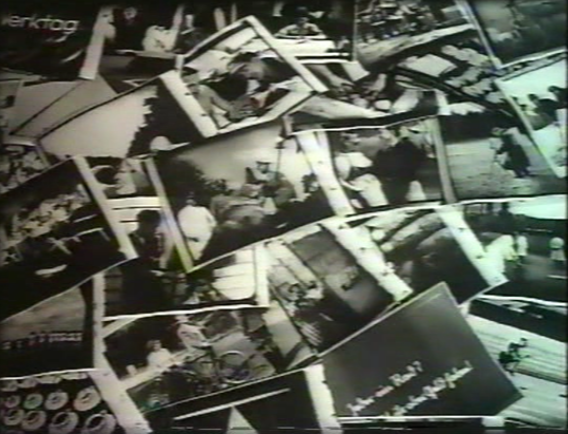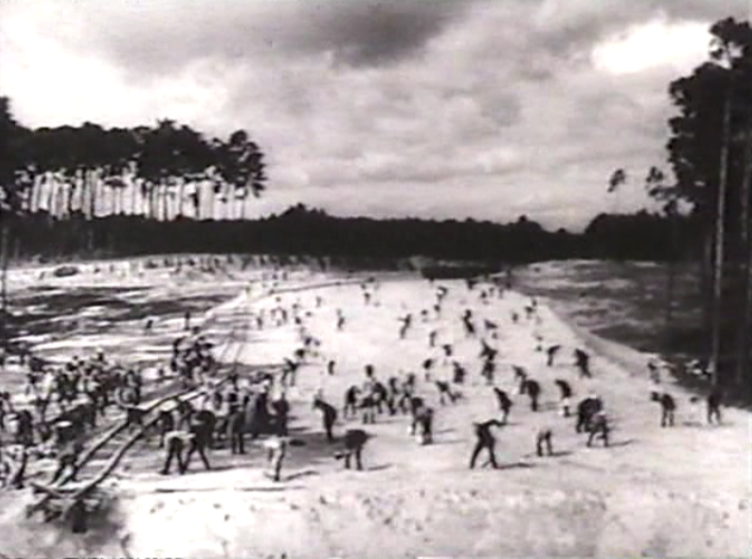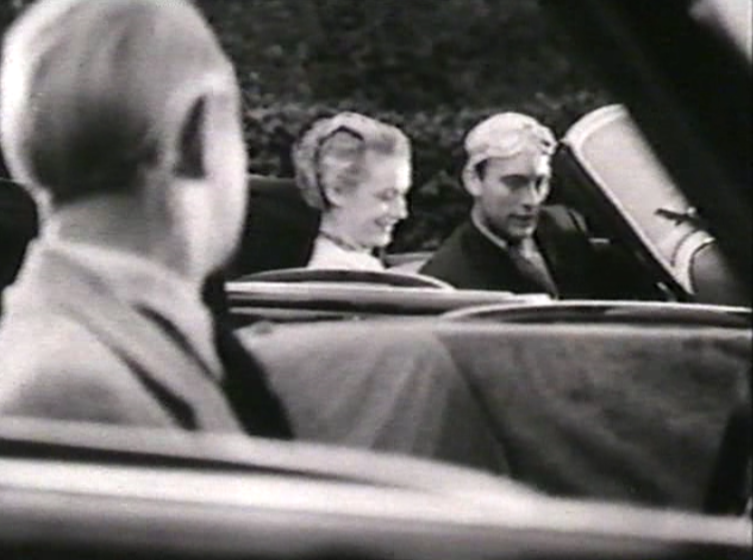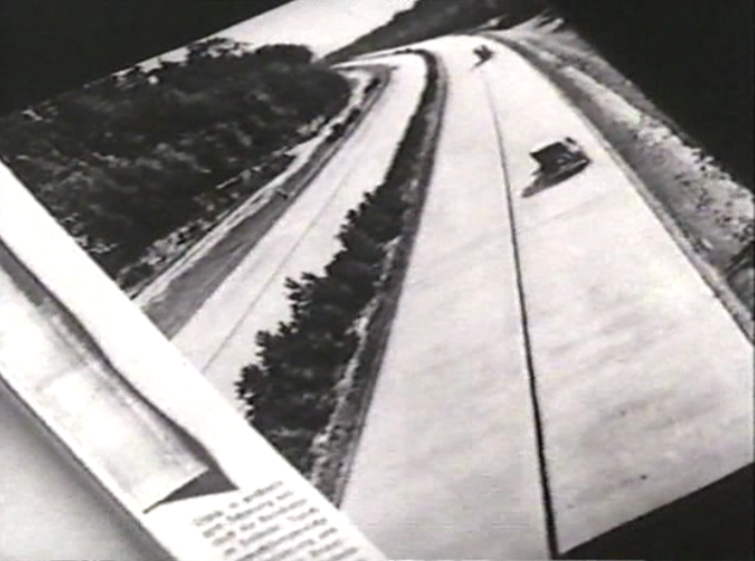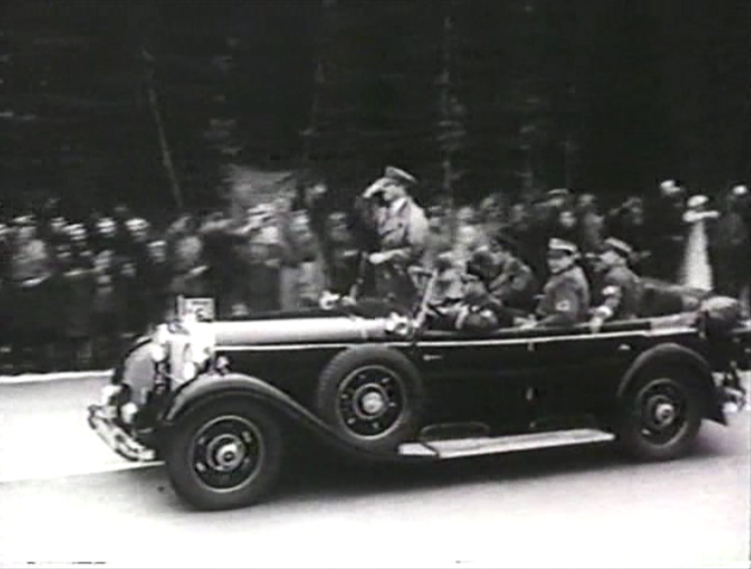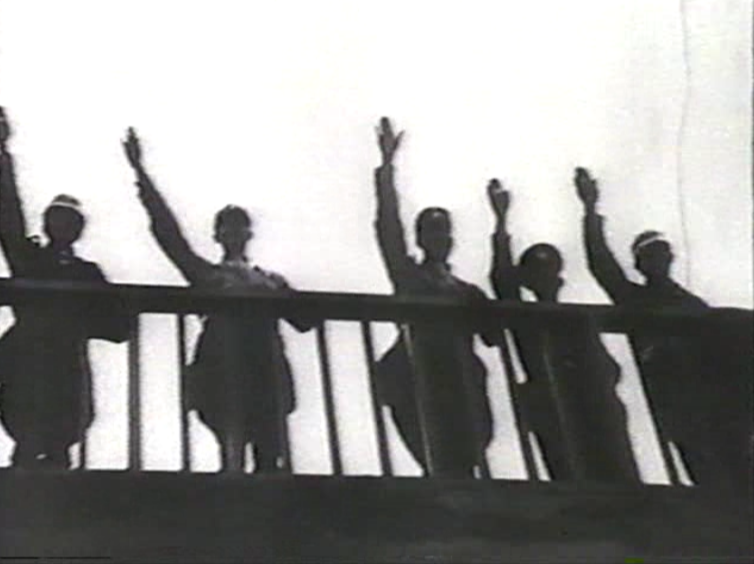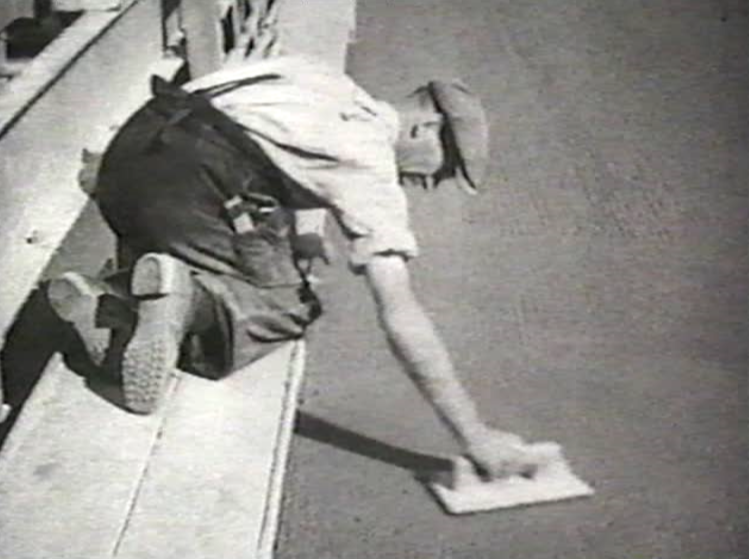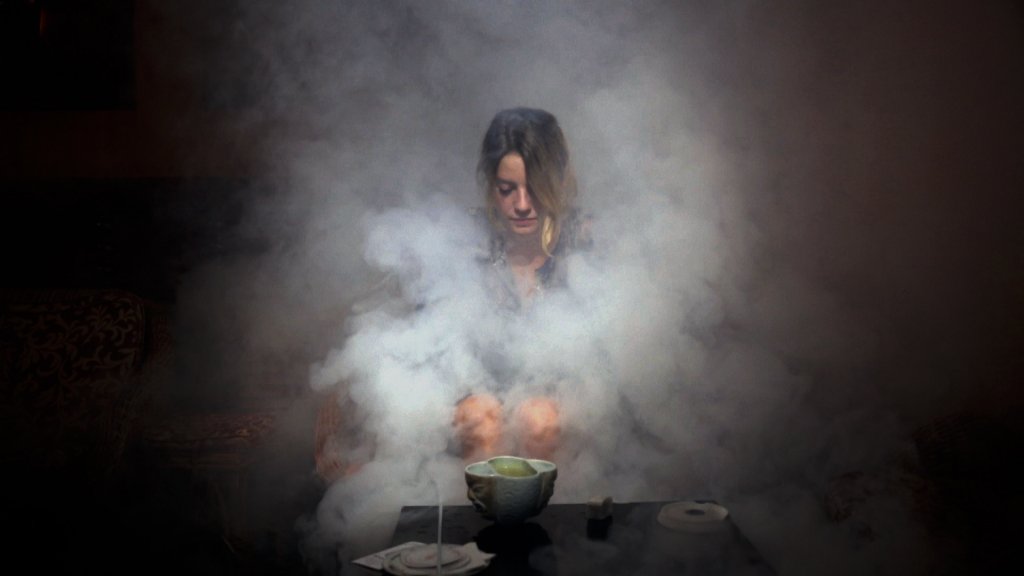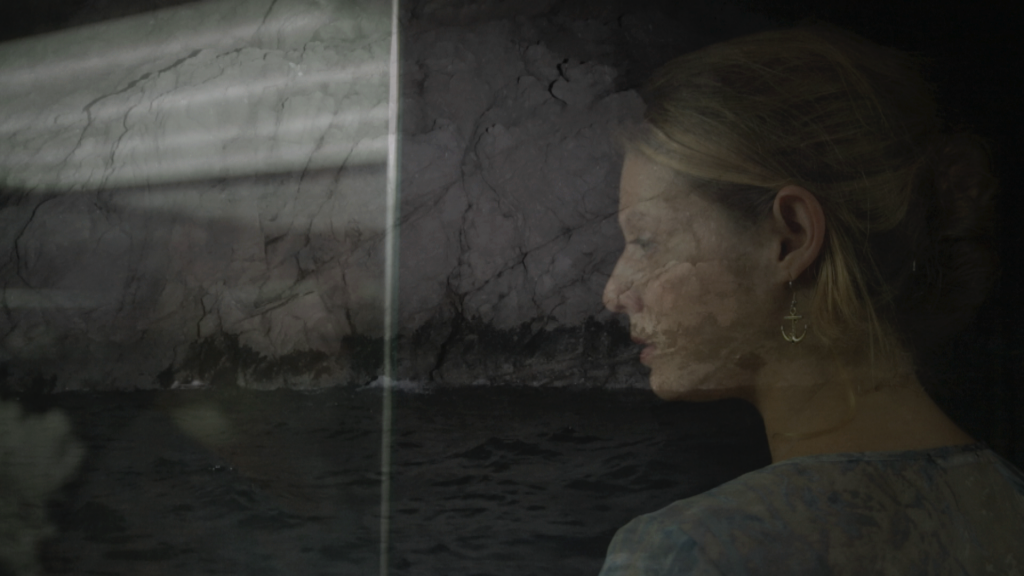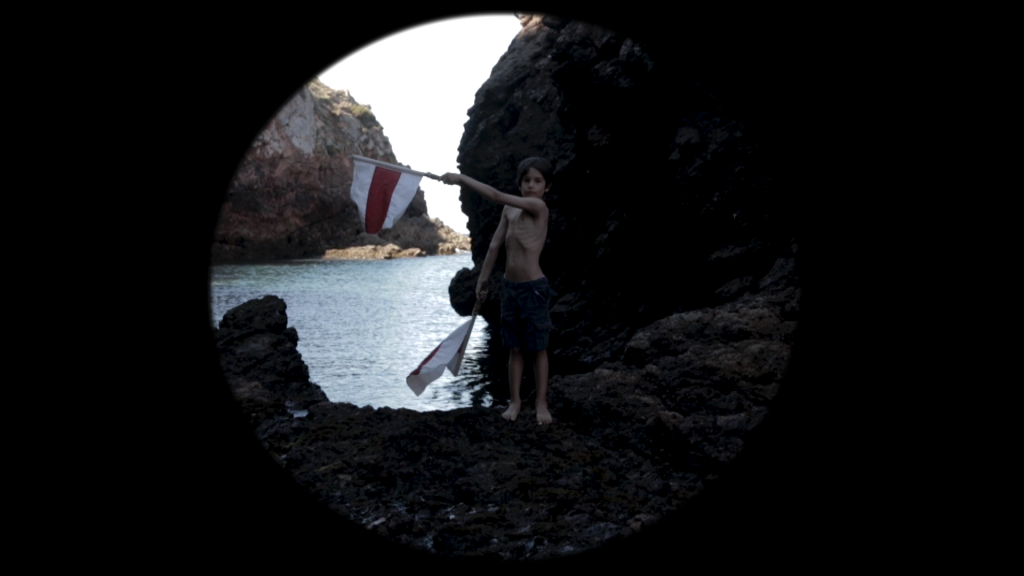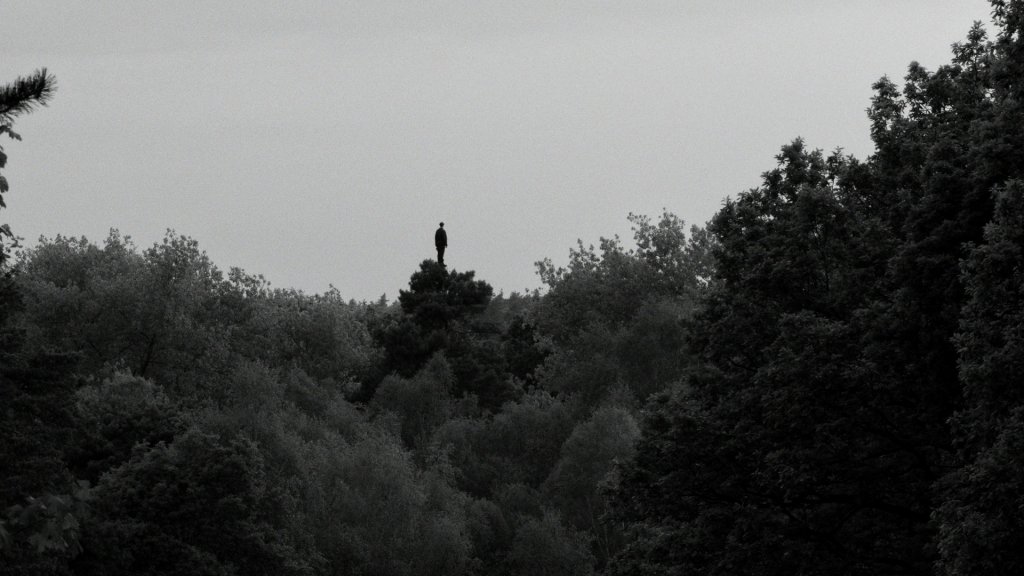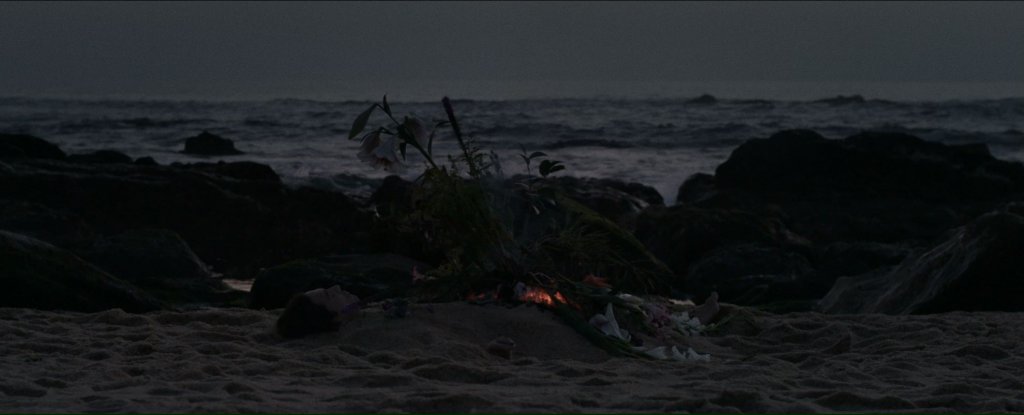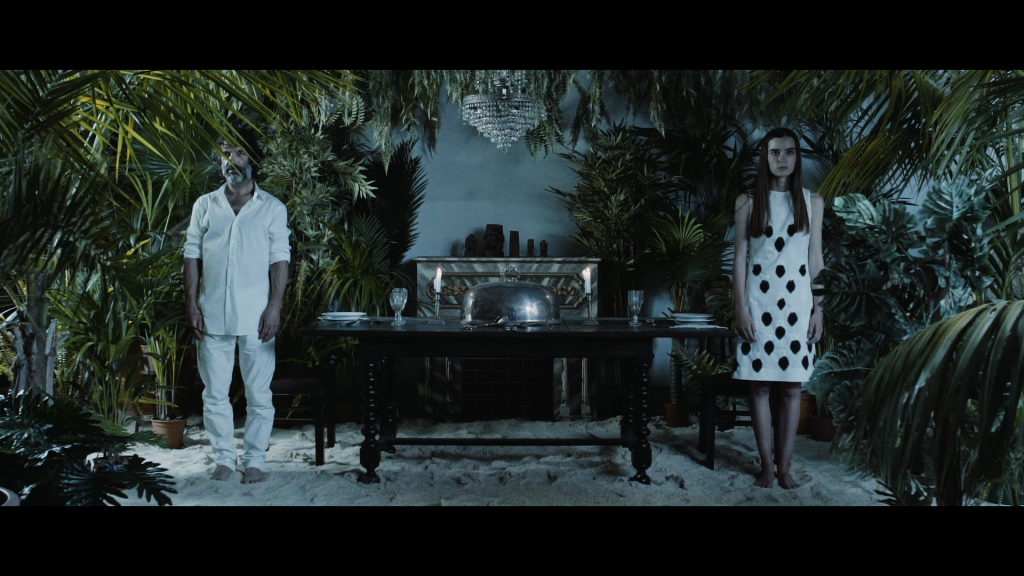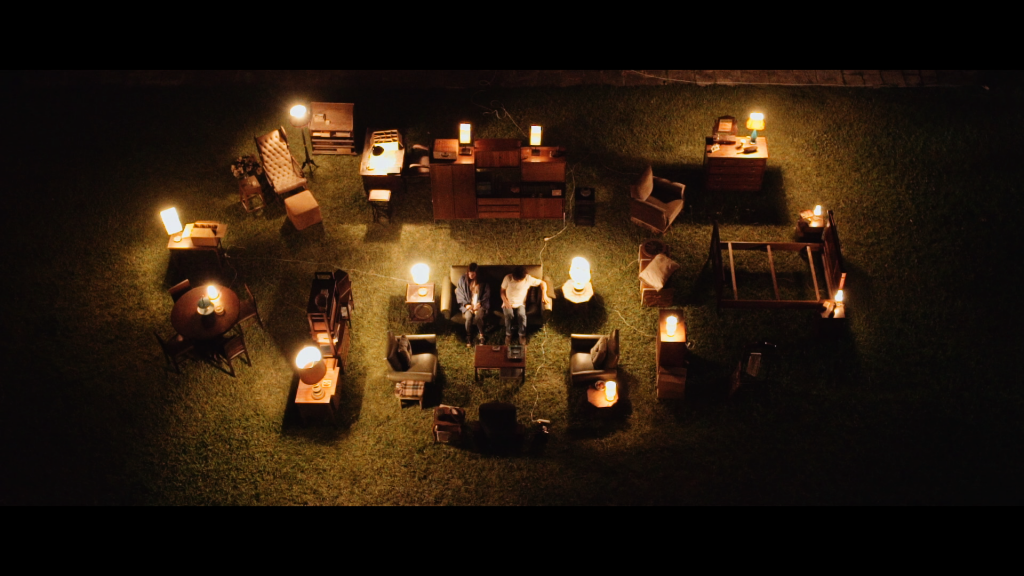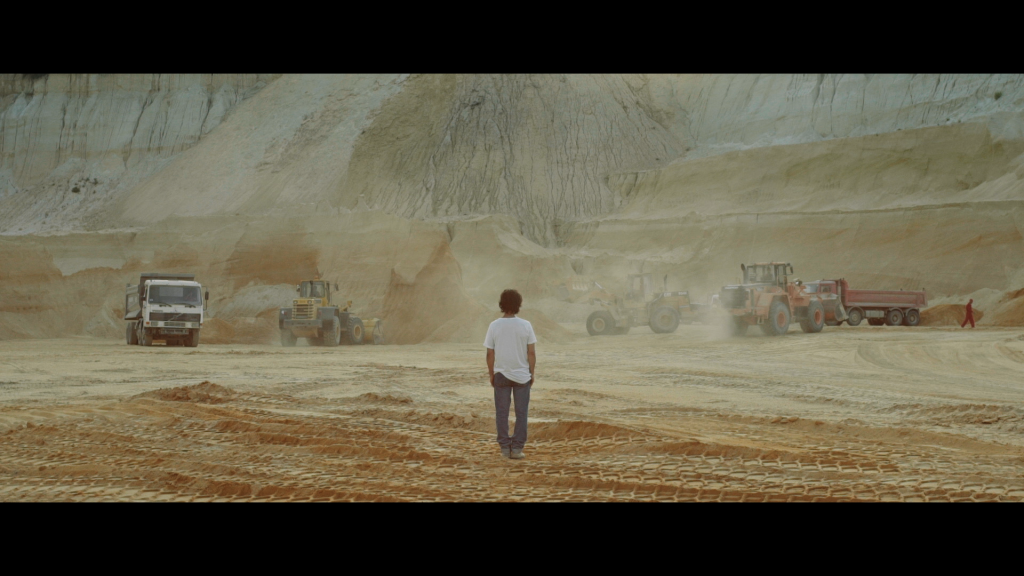FI 2010, D: Maria Lindberg, 75’, German version, Blu-ray
The barometer is falling. Leaves are covered in grey dust. The sky is turning red. The Hattifatteners are the first to leave Moominvalley, more inhabitants follow. This is it, clearly visible: there is a comet in the sky! Moominpappa, Moomintroll and his friends Snufkin and Snif head off to figure out the secret of the flying fireball. They build a raft and ride it to the observatory in the mountains, a place that gives them a better view on the sky. There lives the professor, whose calculations reveal that the comet will hit the earth in four days, four minutes and forty-four seconds. Moomintroll and his friends decide to return to Moominvalley to warn everyone. On their way, they meet Snork and Snorkmaiden and become friends with them. But still, there is this tricky comet…
With tender puppet animations, MOOMINS AND THE COMET CHASE tells an adventure for small and big GEGENchildren, talks of a changing environment and of the courage to take action. Starring Björk’s comet song and lots of surprising incidents.
14 April, 2 pm – UT Connewitz – € 2
Released for children aged 0 or above
CHN 2018, Director: BI Gan, Monteur: QIN Yanan, Directors of Photography: YAO Hung-I, DONG Jinsong, David CHIZALLET, Actors: TANG Wei, HUANG Jue, SYLVIA Chang L, LEE Hong-Chi, DCP, 140′
LONG DAY’S JOURNEY INTO NIGHT is Chinese director Bi Gan’s second fulllength feature. In the form of a neo-noir film, it tells of a man’s return to his hometown and his quest to find a woman he once loved. He is surrounded by different layers of things past that do not let him go. He passes through areas of back then, pursues traces, finds leads. Still, the approach stays no more than an appealing illusion. Stories and images drift, become more and more dreamlike, mingling with flashbacks of past love’s stylised memories. The present can no longer be detached from the unconscious. As protagonist Luo walks into a dim cinema, things take an unexpected turn. A film starts, he puts on his 3D glasses. He watches a screening of “Long Day’s Journey into Night”. Simultaneously, the audience’s sight switches into the third dimension, too: the last scene is a seventy minute one take. The elegant camera follows Lou underground, on top of a mountain, down a ropeway. Charmingly, we lift off with him and land in surreal surroundings. There, we follow movements through alleys and houses to end up in a spinning room.
14 April, 9:30 pm – Luru Kino at the Spinnerei – € 7,5 (6,5 red.)
Trailer
FRG 1982/83, D: Hartmut Bitomsky, Heiner Mühlenbrock, Doc, 60′, German version, 35mm
It starts as a montage of black and white scenes presenting all kinds of sportive activities, formal attractions and everyday cheerfulness. Among them are also images of a swastika-confetti shower and first uniforms; a flood of “Deutschlandbilder”. Subsequently, a tracking shot along spread film photos, the voice over soberly assesses: “The Nazis wanted to put a complexion on Germany that pleased them. They were decidedly drawn to aesthetic beauty. They appreciated films that depicted German culture – cultural films.“ These cultural films are concerned in this essayistic compilation film made of archival footage.
The construction principle seems simple: chronological panels mark the time of origin of the commented-on Nazi cultural film extracts from 1933 to 1945; occasionally interlaced are scenes that are staged divergently, showing photographic reproductions being flicked through or paced off by the camera, accompanied by a voice over. However, the question essentially driving the film is a complicated one that cannot be resolved conclusively: What do these images tell us today, and how are we to talk about about them in the present? There has been no iconoclasm: they are accessible, commonly used to prove how fascism was like, but they themselves are an immense pseudo-production. Pseudo-realities concealing more than they show. Yet they expose something. In the end, it is said: “An image is the mask of the other.“
With an introduction by Ramón Reichert (in German)
[Working on the image | Insights into the work of Hartmut Bitomsky]
15 April, 7 pm – Luru Kino at the Spinnerei – € 6,5 (5,5 red.)
FRG 1984-86, D: Hartmut Bitomsky, Doc, 91′, OV with English subtitles, 35mm
Already prior to 1933, the road- and automobile industry projected a German motorway. Only Hitler and his Inspector General for German road sector made them into a propagated showpiece. But what they created first and foremost, is its calculated aesthetics. Contemplation outshone its actual function. The autobahn was achieved through exploitative working conditions and was subsequently scarcely used. By no means, it can be regarded as a successful job creation scheme, neither did it serve as a strategic “military road“ at the beginning of the war. Nevertheless, countless films, photographs, poems, postcards, paintings and novels accompanying it never grow tired of praising it: “Books and images were the autobahn’s facade. Most of it is self-praise or reassurance. The autobahn is useful, and it is beautiful. It is proven to one what actually should have been evident. One senses the burden of the evidence.“
Repetetively, the enthusiastic worker is put into the frame, the individual bows to the big picture. It is emphasised how a modern street is in conformity with pastoral nature. An enourmous number of such produced Nazi-images is rescued from archives and compiled. Hartmut Bitomsky’s voice-over seeks to demythologise those images. Formally undogmatic on the one hand, REICHSAUTOBAHN classically gets contemporary witnesses and experts a chance to speak on the other.
[Working on the image | Insights into the work of Hartmut Bitomsky]
15 April, 9 pm – Luru Kino at the Spinnerei – € 6,5 (5,5 red.)
THEATRUM ORBIS TERRARUM
PT 2013, A: Cavaleiros do Mar, João Fernandes, 30′, OV with Englisch subtitles, DCP
A TORRE
PT 2015, Doc, 8′, OV with Englisch subtitles, DCP
UBI SUNT
PT 2017, Doc, 30′, OV with Englisch subtitles, DCP
COUP DE GRÂCE
PT 2017, A: Miguel Borges, Clara Jost, João Pedro Benard, 25′, OV with Englisch subtitles, DCP
Juxtaposed, the assembled films exhibit central themes and narratives that are particularly present in Lamas’ work, such as the relation of a story to its visual representation or the impact of fiction in every kind of storytelling – most notably in allegedly documental narratives. Lamas’ objective is not so much a “true“ depiction of the real, but rather she focuses on ambiguities, on elements of social realism being side by side with dreamlike, surreal telling.
A TORRE for example consists of material that came about during the filming of EXTINCTION (see 20 April, 8pm). In contrast to EXTINCTION, protagonist Kolya does not enter the delicate realm of nationalistic conflicts here, but instead only the region where nature and human body, sky and earth meet. Kolyas body blends with a treetop. Lamas offers different variants on how this border transgression can be read. In TEATRUM ORBIS TERRARUM, the point of reference is the first atlas from the year 1570, consisting of 70 single cards. The idea of a pictorial depiction of space is the starting point of her unique adventure tale, where she expands the arbitrariness and fictivity of a map to museums and archives, that is to the other representing forms of “theatre“. UBI SUNT addresses the social and geographic outskirts of Porto with eclectic images and stories. Interviews of inmates of a juvenile prison alternate with dance performances.
16 April, 7 pm – UT Connewitz – € 6,5 (5,5 red.)

